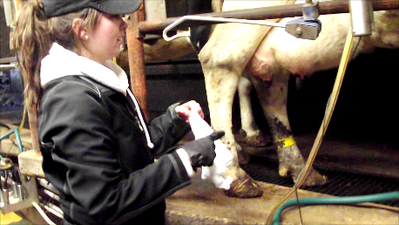About Terry Towels
|
|
|
Terry towels are textile products
that are often very complex and made out of 100% cotton. Terry towels can be
made from different types of yarn, colours, and different loop patterns, which
makes them so highly complex. The most two important details
that must consist in the complexity of terry towels are thickness and the
ability to absorb large quantities. The specific way, in which
the loops are processed, automatically decide how absorbing the towel will be.
The more loops at larger sizes, will absorb more liquid due to increased
surface area throughout the towel (Powell & Yilmaz, 2005). Depending on the use of the
towel, they can be made in different sizes, or even cut down to preferred size.
Terry towels are a rapidly growing market, de to the fact that they have multiple uses and are not overly difficult to manufacture. The market for this product is also increasing due to the softness; cleaning ability as well as high absorption these towels are made possible to have (Everett & Moyer, 2010).
Terry towels are a rapidly growing market, de to the fact that they have multiple uses and are not overly difficult to manufacture. The market for this product is also increasing due to the softness; cleaning ability as well as high absorption these towels are made possible to have (Everett & Moyer, 2010).
Types of Terry Fabrics
There are two main types of terry fabrics that are used commercially. The first and most common type of terry fabric is the terry towel fabric, which is made to absorb large amounts of water. This type of towel is unique due to the large loops it is composed of, thus increasing the surface area for absorption (Powell & Yilmaz, 2005).
The second type of terry fabric used is called the French terry fabric, or warp knitted fabric. This type of fabric is most common in clothing and typically only consists of loops on one side of the fabric, while the other side is flat. These materials are not always 100% cotton, they can also include materials such as polyester to give a more elastic give to the fabric (Powell & Yilmaz, 2005).
The second type of terry fabric used is called the French terry fabric, or warp knitted fabric. This type of fabric is most common in clothing and typically only consists of loops on one side of the fabric, while the other side is flat. These materials are not always 100% cotton, they can also include materials such as polyester to give a more elastic give to the fabric (Powell & Yilmaz, 2005).
Different Uses of Terry Towels
 Figure 2. The use of terry towels in livestock operations
Figure 2. The use of terry towels in livestock operations
As mentioned above, there are multiple different types of terry cloth which makes them very useful for various tasks. Terry cloth can be used for workout towels, bath towels, or even as clothing. More recently, mothers have been using terry cloth towel diapers, as they are promoted to be a healthier option for newborn babies (Powell & Yilmaz, 2005). The viability of the terry towel makes it a suitable product for even the toughest cleaning possible, such as cleaning manure and other substances off of livestock (Seegers, Fourichon and Beaudeau, 2003).
Company Information
Terry towels are sold world-wide as they are used in multiple different scenarios throughout the world. Terry towels can be found at any location where textiles are sold, however higher quality terry towels are found at textile focused companies (Everett & Moyer, 2010). A Canadian company that supplies textiles to larger corporations at a bulk price is the company named Cintas Ltd. The terry towels of choice will be priced at $0.50 per towel, and can be bought in bulk quantities of personal preference. These towels are also made domestically, in Canada (K. Clark, personal communication, 2014).
